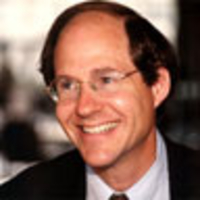To date, the Star Wars franchise has earned about $30 billion. That’s more than the gross domestic product of about ninety of the world’s countries. Doesn’t it deserve its own seat at the United Nations?
In North America, The Force Awakens has become the highest-grossing film of all-time. But if you adjust for inflation, A New Hope, the initial release in 1977, remains the saga’s box office champion. With the exception of Gone with the Wind, it has made more money than any film in the history of the galaxy.
There’s a big mystery here. Before its release, the expert consensus was that A New Hope would flop. Throughout its production, most of the executives at 20th Century Fox had no faith in the film or George Lucas, its director. A lot of them wanted the whole project to go away. How could they have been so wrong?
ADVERTISEMENT
It’s revealing that when Lucas and his team started to run out of funds, Lucas had to use some of the money he had made from American Graffiti. Without that infusion of personal cash, the whole project might have collapsed.
Even during the last stages, Lucas acknowledged that he himself “didn’t think the film was going to be successful.” He added that “nobody liked it.” That’s an exaggeration—Steven Spielberg, Lucas’s friend, thought that it was terrific—but almost everyone thought that it was lousy and would prove to be a bust.

Even the actors were skeptical. In Harrison Ford’s words, “There’s this giant guy in a dog suit walking around. It was ridiculous.” Mark Hamill reported, “I remember thinking, it’s really hard to keep a straight face doing this stuff. Alec Guinness sitting next to a Wookie—what’s wrong with this picture?” David Prowse, who played Darth Vader (though of course James Earl Jones did the all-important voice), summarized the general view: “Most of us thought we were filming a load of rubbish.”
After the board at Fox finally saw a rough cut, there was no applause. No one was even smiling. To prove its lack of faith, the studio saw fit to show just one trailer for the film, at Christmas; it was shown only once more, during Easter.
Astonishingly, Fox concluded that the movie wasn’t even worth the celluloid on which it was printed—literally. The studio made fewer than 100 prints, which caused a terrible problem once the crowds demanded to see it.
Movie theaters, whose business is to know what people will like, responded unenthusiastically. Fox hoped for advance guarantees of $10 million (a modest figure), but got only a fraction of that: a humiliating $1.5 million. Even after the massive opening crowds, Lucas had no idea what was coming: “Science fiction films get this little group of sci-fi fans. They’ll come to anything in the first week. Just wait.”
Tens of billions of dollars later, we’re still waiting. What did everyone miss?
The answer is that the film taps into the deepest recesses of the human heart. It does that not with spaceships and lightsabers, but instead by retelling, and making new, a time-honored tale: the hero’s journey.
Lucas was much influenced by Joseph Campbell, author of The Hero with a Thousand Faces, who claimed to identify a “monomyth,” connecting multiple religious traditions and myths. Campbell urged that whatever their culture, human beings are emotionally drawn to a tale of a hero whose life fits an identifiable pattern.
The hero is called to an adventure. He initially refuses. Ultimately agreeing, he leaves home and meets some kind of mentor. He confronts terrible enemies and he faces a final ordeal. At that stage, he is killed or nearly so—but manages to be renewed or resurrected, ultimately returning home. Enlisting Freud, Campbell argued that this basic tale has deep psychological resonance, which accounts for its universality.
Lucas described Campbell as “my Yoda,” and he wrote the story of Luke Skywalker (and later Anakin too) to create a modern myth, a hero’s journey complete with spaceships, lightsabers, and droids. But he added an all-American theme of his own: freedom of choice.

In the world of Star Wars, what you do is ultimately up to you, whatever the prophets say. Here’s Leia, speaking of Han’s apparent desertion of the rebellion: “A man must follow his own path. No one can choose it for him.” Obi-Wan to Luke: “Then you must do what you think is right, of course.”
If the Star Wars saga has a secret sauce, it’s Campbell’s monomyth, told directly under a star-spangled banner. Self-interested smugglers can choose to come back, and with a single shot, they can rescue their buddies. (“YAHOO!... You’re all clear, kid, now let’s blow this thing and go home!”) A farm boy can elect to go to Alderaan, learn the ways of the Force, and become the most powerful Jedi Knight in the galaxy. A terrible villain, encased in metal, can choose to save his own son, sacrificing his own life in the process, and restoring balance to the Force.
Sith Lords believe in the irresistible power of destiny. They like to say, “Everything is happening as I have foreseen.” Yoda saw things differently: “Always in motion is the future.” To their delight and amazement, that’s the lesson that executives at 20th Century Fox learned in 1977—and it’s the lesson that our modern myth keeps offering people today.





